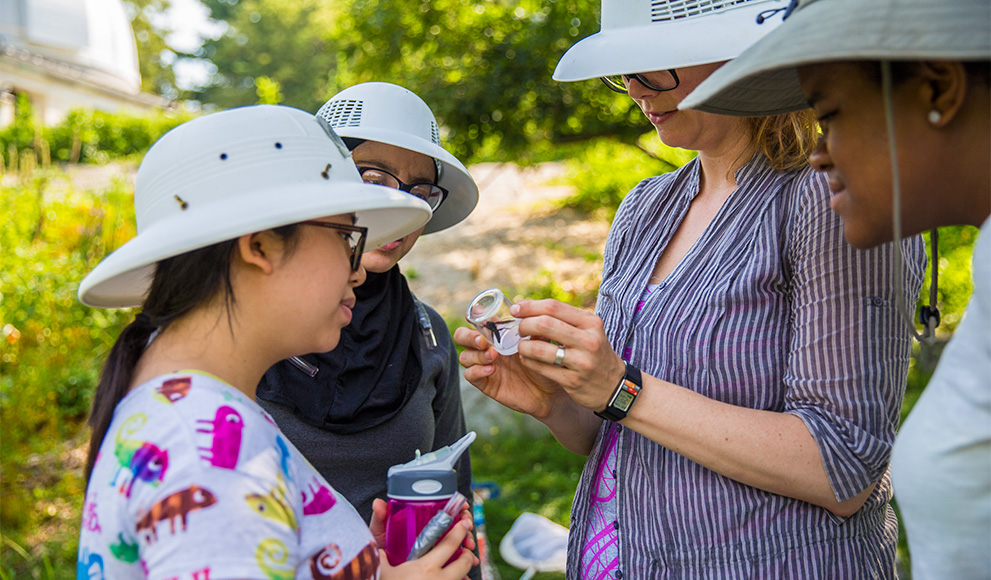A Recent Bio Survey Revealed Insights About Wellesley's Edible Ecosystem Garden

Wellesley’s Edible Ecosystem Teaching Garden is designed to be a self-sufficient biological community, meaning the needs of fruit trees, berry shrubs, and other edibles are met by other organisms rather than by human inputs or chemicals. These needs, which include things like pest control, weed management, and nutrient content of soil, are supported by carefully selected plantings designed to attract insects.
”The Edible Ecosystem garden is about the intersection between biodiversity and food production,” said Kristina Jones, director of the Wellesley College Botanic Gardens and adjunct assistant professor of Biological Sciences. “The more we understand about the biodiversity of the garden—not just the incredible diversity of plants we put in, but who else lives there in the soil and on the plants—the more valuable the garden will become as a research platform, particularly for students interested in ecology, sustainable agriculture and permaculture.”
Jones and Heather Mattila, associate professor of Biological Sciences, led a bio survey this summer to try to understand which plants attracted the most, and most diverse, beneficial insects. They were joined by Botanic Gardens student interns Clare Salerno '18 and Isaac Zerkle '18, Research Technician Carolyne Banks '15 and Mattila Lab students Corena Loeb '16, Amina Ziad '17, and Anne Shen '17. The survey was repeated a week later by Botanic Gardens summer interns, Joy Price '17, Lara Jones '18, and Maureen McCord '18.
Kristina Jones said the group found several kinds of wasps, syrphid flies, lady bugs, and a few other kinds of beetles. They also found many different pollinators, including a few butterflies and skippers, and at least 10 species of bees. The bees included bumble bees, honey bees, several kinds of solitary bees (two of which were a brilliant metallic green), and some of the Mattila Lab's marked research bees.
“The students in my lab have been studying the effect of colony nutrition on foraging effort, which involves the collection by bees of pollen resources from flowers,” Mattila said. “It was a wonderful experience for my students to witness pollination in the field. Most of the time, they monitor hives to assess foraging and recruitment, so their participation in this survey gave them insight into how bees operate away from home and out amongst flowers.”
The team also found some intriguing predators, including a Mydas fly and a Jagged Ambush Bug. The Mydas fly, which is the largest fly in North America and resembles a large wasp, spends most of its life cycle developing underground where it eats things like beetle larvae. Japanese beetles, a species whose larvae develop underground, are one of the garden’s pests. “This is an example of unseen predator-prey interactions that could help keep pests in check,” Jones said.
“All of the students seemed quite intrigued to see the insects close up, and marveled at their looks. The Mydas fly got the most oohs and ahhs.” Jones said. “Appreciating the diversity of insects and the many roles they play in healthy ecosystems, including designed ones like this garden, is the big take-home.”
The mountain mint (Pycnanthemum) flowers were the winners in terms of both numbers and diversity of insect visitors this time. The surveys will be repeated at least annually and during different growing seasons when different things are in bloom. “Goldenrod has come into bloom since our survey, and is known to support a great diversity of insects in natural settings, so could give the mountain mint a run for its money,” Jones said.
Mattila said, “It was exciting to learn about the work of another research group in our department and to work collaboratively with them in an effort to assess the biodiversity of our campus. [But,] most importantly, insects are cool!”
